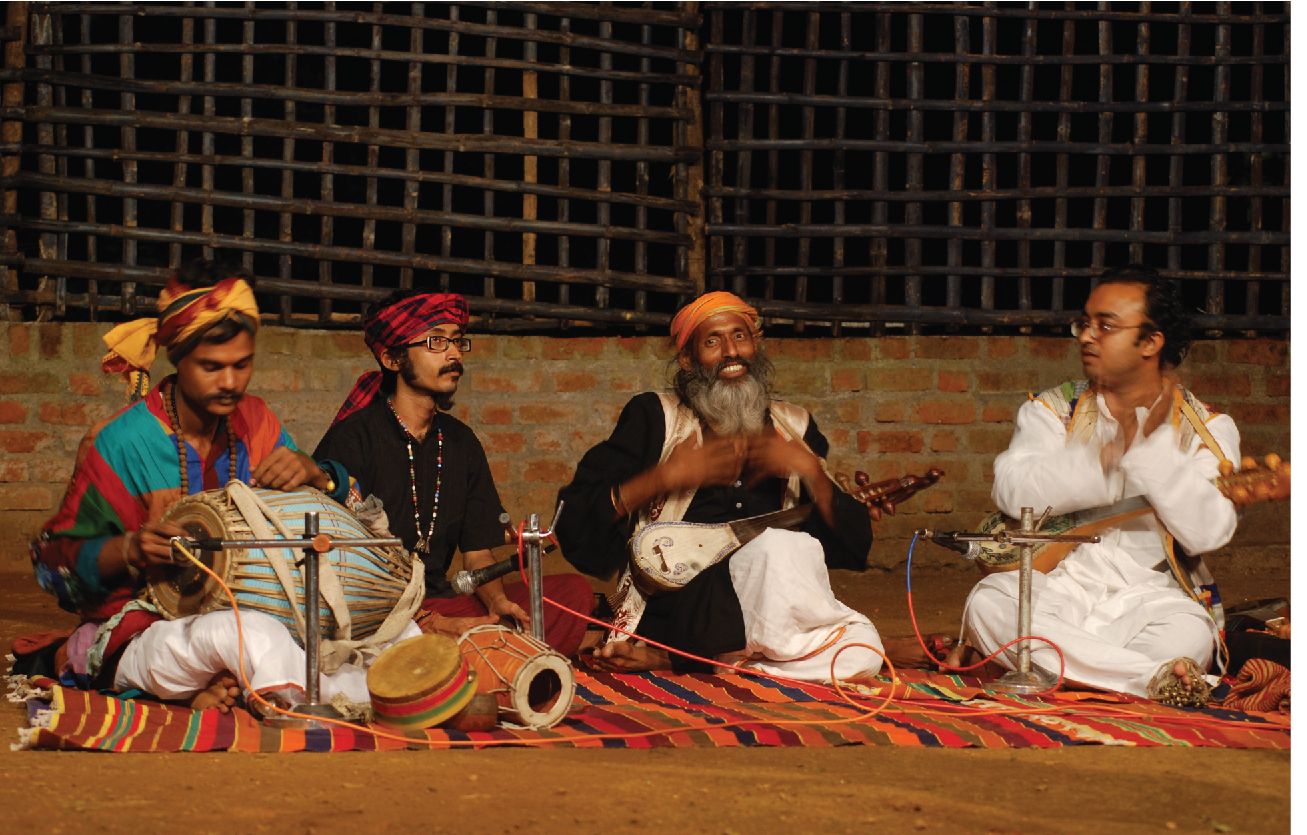Sharadotsava – Annual Autumn Festival

During the month of October comes Sharadpoornima to mark the Fall season in India. It is the night when the Goddess Of Wealth (Mahalakshmi) bestows bounty on anyone who is awake for the entire night to receive Her.
On this full moon night of Sharadpoornima, Krishna is said to have danced the ‘Maharaasa’with the gopis (devout souls), to give them an experience ‘Onesness’. Sharadotsava is celebrated at the ashram by a Cultural Awareness programme that is topped by a vibrant, all night, folk arts festival to celebrate the glorious traditions of folk arts in India.
- To experience the richness and vastness of Indian folk arts traditions
- To understand the intelligence in our cultural roots and traditions.
- To detox the mind-body-intellect and emotions.
- To get a first-hand experience of life style changes that balance ‘aahar’ (food), ‘vihar’ (leisure) and ‘nidra’ (sleep).
- To look deeply and closely at the language of classical Indian arts.
- To learn to live in simplicity.
- To learn from Nature’s Book.
Standard Modules
Yoga & Meditation
Environmental Treks
Interactive Dialogues
Primary Modules
Understanding Classical Indian Dance
Understanding Classical Indian Music
Exploring Indian Mythology
Understanding Traditional Architecture
Secondary Modules
Holistic Living (food, nature, philosophy)
Cultural Performance
Folk arts performance
2 Primary Modules + 1 Secondary Module + Standard Modules + Cultural performance (for a 3 nights 4 day retreat
All programmes include Community service (Seva)
A typical cultural awareness experience retreat is for 3 nights 4 days.
It can be designed for 1 night 2 days or 2 nights 3 days, longer retreats for a week to ten days are also offered. You can also work with us to build your program.
A typical day at the retreat is
6.00 am Wake up
6.30 – 8.00 am Meditation & Yoga
8.00 am – 10.00 am Bath & breakfast
10.30 am – 12.30 pm Module
1.00 – 2.00 pm Lunch
2.00 pm – 3.30 pm Rest
4.00 pm – 6.00 pm Module
8.30 pm Dinner
10.00 pm Retire
The itinerary is subject to change depending upon the need of the program.
This programme is for:
- The educated individual who wants to understand his/her cultural roots.
- The urban educated person who is looking for meaning and depth in his/her life.
- To initiate introversion though the arts, environment or spirituality.
- Those who want to enjoy simple living that questions ones many wants and needs.
- Those who want an ashram gurukul experience and some quiet ‘me’ time.
Interested ?
 Join a program
Join a program
 Contact
Contact
Programs you may like

The Indian Dance gurukul with its leisurely, residential, gurukul structure gives the young dancer an opportunity to delve into the finer points of the art that a typical Indian Dance ‘hobby’class does not have the space for. Beginning with fitness & nutrition, it also encompasses the yogic concepts that are encased in its aesthetics. The spiritual disciplines at the ashram in the form of yoga, meditation & temple worship makes it possible for the dancers to ‘Walk The Talk’.
The Ashram

An educational-cultural centre dedicated to study and practice of classical Indian arts and sciences with a spiritual and environmental consciousness.
Shaktiyogashrama is committed to the values of living in a commune. But it is a commune that is held together not by dogmatic religious beliefs but by the humanitarian values of love, peace & universal brotherhood.At Shaktiyogashrama this very spirit of the Gurukul system is embodied within all that we are and all that we practice.
Participants are requested to not carry their urban stress, consumerism, extroversion, shallow entertainment forms and digital obsessions to the ashram so that learning can happen.
We are a drug, alcohol, smoking and meat free campus. The community abides by a few agreements and we ask for your help in continuing to abide by them.
We are taking some steps to make this gurukul a low waste zone and we request for your help in reducing waste (of all kinds) during your visit. Participants are requested do not bring packaged snacks or stuff that will generate waste here. In case if you do get them, then we request you to carry your waste out with you when you leave.
The ambience encourages living close to nature, living in simplicity and living with an inner discipline.
and emphasise the need for spiritual orientation in education.
The space is dedicated to study and practice of classical Indian arts and sciences with a spiritual and environmental consciousness.
The residential short term programs area an integration of spirituality, ecology, lifestyle and the classical arts – with an emphasize that yoga is the chief goal of all these disciplines.
The rural initiative is an integral area of the gurukul, with a view to empower, educate, to build self-esteem, inculcate the scientific temperament and to introduce an arts culture.
Babaji scouted the entire Peth, Shahpur, Telbaila and Bhamburde village in Maharashtra for days on end before he set his heart on the beautiful scenic land in Telbaila village that was surrounded by mountains on all sides. Located in the midst of nature in all its glory, the Ashram is placed 32 kms away from its closest urban dwelling, Lonavla.
The valley is situated in the midst of mango trees and bamboo forests with seasonal waterfalls. It is cradled by the serene yet formidable mountains that surround it on all sides. A Durga temple on the top of mountain is a popular trekking and hiking point.










